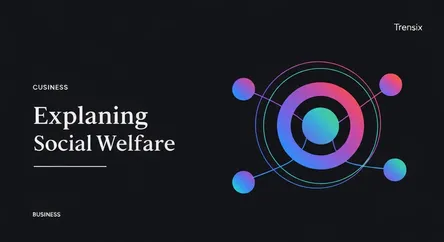Business
Explaining Social Welfare

Discover what social welfare is, why it's a key economic topic, and how government assistance programs impact society and individual lives.
What is it?
Social welfare refers to a range of government programs designed to provide a "social safety net" for citizens. This assistance aims to ensure a minimum standard of living and can include financial aid, healthcare, food assistance (like SNAP), housing subsidies, and unemployment benefits. The core idea is to protect individuals and families from economic shocks and poverty, promoting societal well-being. These programs are typically funded through taxation and represent a government's commitment to the welfare of its populace, ensuring basic needs are met.
Why is it trending?
The topic of welfare is constantly trending due to its central role in economic policy and political debate. Discussions intensify during economic downturns, election cycles, and periods of high inflation when more people may require assistance. Debates often revolve around the system's cost, its effectiveness in reducing poverty, and its potential impact on work incentives. Modern conversations also include proposals like Universal Basic Income (UBI) as potential evolutions of traditional welfare models, keeping the subject at the forefront of public discourse.
How does it affect people?
Welfare programs have a direct and significant impact on daily life. For recipients, they provide essential support to cover basic needs like food and shelter, offering stability during periods of unemployment or crisis. For taxpayers, these programs are a major component of public spending, influencing national budgets and tax policies. Economically, welfare systems can stimulate demand by providing income to low-income households, but they also fuel ongoing debates about dependency, government spending levels, and the overall health of the labor market.